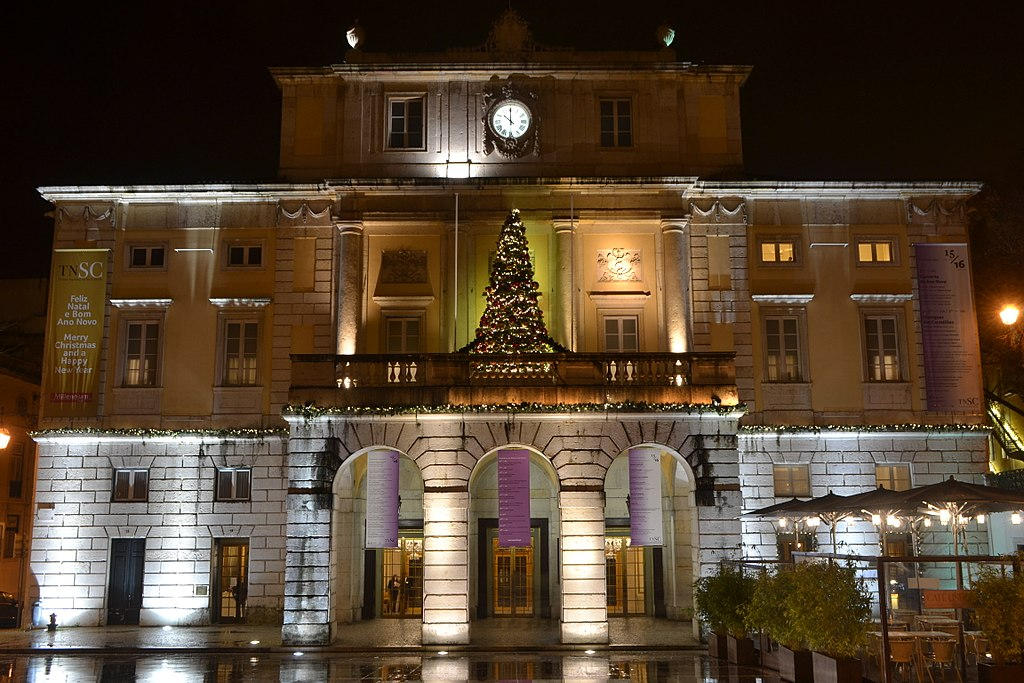The establishment of this illustrious theater was not solely an act of patronage but rather a financial endeavor orchestrated by a group of influential Lisbon merchants. In a time when Portugal lacked formal banking institutions, these merchants provided the necessary funding to bring the project to fruition. However, it wasn't until 1854 that the State fully acquired the theater, settling the financial arrangements made by these merchants. Notably, the State took ownership of the original Quintela family's private box only in 1940.
Prior to the construction of Teatro Nacional de São Carlos, Lisbon experienced a vibrant theater scene with the creation of the Society for the Support of Public Theaters in the 18th century. Two public theaters, the Teatro da Rua dos Condes and the Teatro do Salitre, catered to the public's growing appetite for Italian opera, drama, and Portuguese-language plays.
Teatro Nacional de São Carlos received its name in honor of Princess D. Carlota Joaquina de Bourbon, the Infanta of Spain, who arrived in Portugal in 1790 to marry Prince João Carlos, the future king. Latin inscriptions dedicated the theater to this princess, preserving her memory for generations to come.
During the early 19th century, while the Portuguese court sought refuge in Brazil to escape the Napoleonic invasions, a theater inspired by Teatro Nacional de São Carlos was constructed in Rio de Janeiro.
Up until the fall of the monarchy, Teatro de São Carlos was commonly referred to as the "Teatro Italiano". This designation became more prominent following Garrett's Theatrical Reform in 1836, which led to the inauguration of Teatro Nacional e Normal (D. Maria II), exclusively dedicated to spoken theater. Conversely, at "Teatro Italiano", only Italian companies performed, primarily using the Italian language. Even Portuguese composers were obliged to write operas with Italian librettos or translations. It wasn't until 1908 that French and German operas began to be performed in their original languages.
The architectural grandeur of Teatro Nacional de São Carlos is truly awe-inspiring. Its neoclassical façade seamlessly integrates with the surrounding Pombaline Lisbon. The opulent interior, designed as an aristocratic space for official representation, features five tiers of ornate boxes, including a grand royal box of exceptional splendor. Italian artist Giovanni Appianni lavishly adorned the theater, while the ceiling paintings were created by Manuel da Costa and Cirilo Wolkmar Machado.
Lisbon.vip Recommends
Throughout its existence, Teatro Nacional de São Carlos has witnessed numerous renovations and restorations, including the addition of electric lighting in 1903 and comprehensive refurbishments in the 20th century. These initiatives have successfully preserved the grandeur and historical significance of this cultural landmark, allowing audiences to continue experiencing the mesmerizing allure of opera and ballet performances.
Today, Teatro Nacional de São Carlos remains a symbol of Portugal's rich artistic heritage. Its hallowed halls echo with the echoes of countless operatic masterpieces, its stage has seen legendary performances, and its walls hold the memories of generations of artists and audiences alike. As one steps into this magnificent theater, they embark on a journey that transcends time, immersing themselves in the beauty and majesty of Teatro Nacional de São Carlos, forever etched into the fabric of Lisbon's cultural identity.





